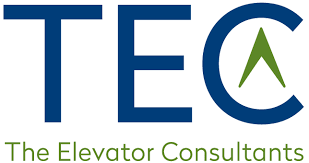Elevators are a unique mechanical component of a building. As vital parts of a building, elevators, escalators, lifts, and dumbwaiters provide efficient vertical transportation for people and goods. However, like any mechanical system, elevators are not immune to problems. They are sometimes referred to as “the mystic” of the building since this area requires an elevator specialist.
Understanding common elevator issues and knowing how to address them can help to ensure their reliable operation. Being aware of common elevator problems, and having the insight as to how an issue may be addressed is very important. A building should never try to do the job of an elevator expert.
1. Irregular Door Functioning
One of the most common elevator problems is door issues that hinder the proper functioning of the equipment. Elevator doors are constantly moving, and at times may incur items being run into them. They may also be obstructed to hold the doors open. Door issues can manifest in various ways, such as the doors closing too slowly, not closing at all, or abruptly reopening.
Regular maintenance involving the assessments and adjustments of door components can help resolve door-related dilemmas. Technicians can check door sensors, guides, and rollers for proper alignment and lubrication. Cleaning the door tracks to ensure that they are free from obstructions can also improve the performance of the doors. The sills of the doors must also be kept clean and free of damage and debris to help eliminate some door issues as well.
2. Elevator Jerking or Shaking
It can be alarming and discomforting when passengers experience an elevator that jerks or shakes during operation. This may occur due to various reasons, such as misalignment, worn-out components, or issues with the control system. When this happens, elevator technicians should be brought in to evaluate and identify the root cause of the jerking or shaking. While there, the technician will survey the elevator system, the safety devices, the controller, and other components to uncover any abnormalities. Prompt repairs, adjustments, or component replacements can resolve these issues and will restore smooth and comfortable rides. The elevator technician will then record the issues into the building’s record-keeping system which is required by ASME A17.1.
3. Unusual Noises
Elevators should operate quietly and smoothly, so strange or excessive noises coming from them can be a cause for concern. Unusual noises may be the result of mechanical problems, loose components, or worn-out parts.
As part of their service call, elevator technicians should conduct a thorough examination of the elevator machinery – including the motor, pulleys, gears, cables, and others. They should identify any loose or damaged parts, then perform the necessary maintenance, repairs, or replacements. Regular lubrication of moving parts can also minimize noise generation. The elevator technician should be able to resolve the issue. In the event that the issue does not get resolved, the building may utilize the service of an elevator consultant to help.
4. Slow or Inconsistent Operation
Elevators should respond promptly and consistently to commands of the system. Slow or inconsistent operation can lead to extended wait times and passenger dissatisfaction. It can also lead to a distorted perception of safety by any riders.
Elevator technicians will assess the responsiveness of the elevator and check the motor, control system, and sensors. Adjustments, lubrication, or repairs may be required to optimize the elevator’s performance. If the equipment is past its life cycle, upgrading outdated systems or modernizing the elevator can improve its speed and efficiency.

5. Electrical Issues
Electrical issues such as power fluctuations, tripping circuit breakers, or faulty wiring can cause elevator malfunctions that can disrupt elevator operations and pose safety risks.
Licensed electricians with elevator expertise can troubleshoot in conjunction with elevator technicians to diagnose and address any electrical problems. They do this by analyzing all electrical connections, assessing the power supply stability, and troubleshooting any other issues that may be occurring. These professionals can provide valuable guidance in order to minimize electrical problems.
The examples above are just a few common elevator problems that may occur. Being aware of these issues and their solutions can aid building owners, facilities managers, and occupants in addressing such issues promptly. This helps to maintain elevator reliability. Routine maintenance, along with proactive troubleshooting and repairs, is crucial in preventing major malfunctions and minimizing downtime. With the proper maintenance, elevators, escalators, dumbwaiters, and lifts can last their full lifecycle. Paying close attention and keeping detailed records will help solve and eliminate these common elevator problems. If these issues remain unsolved, an elevator consulting firm can guide the building personnel to the appropriate resolutions.
Remember, for complex elevator issues, it is always best to consult professional elevator technicians or an elevator consultant. These trained professionals have the knowledge and experience to diagnose and resolve intricate problems, ensuring the safe and efficient operation of elevators, escalators, lifts, and dumbwaiters in your building.

